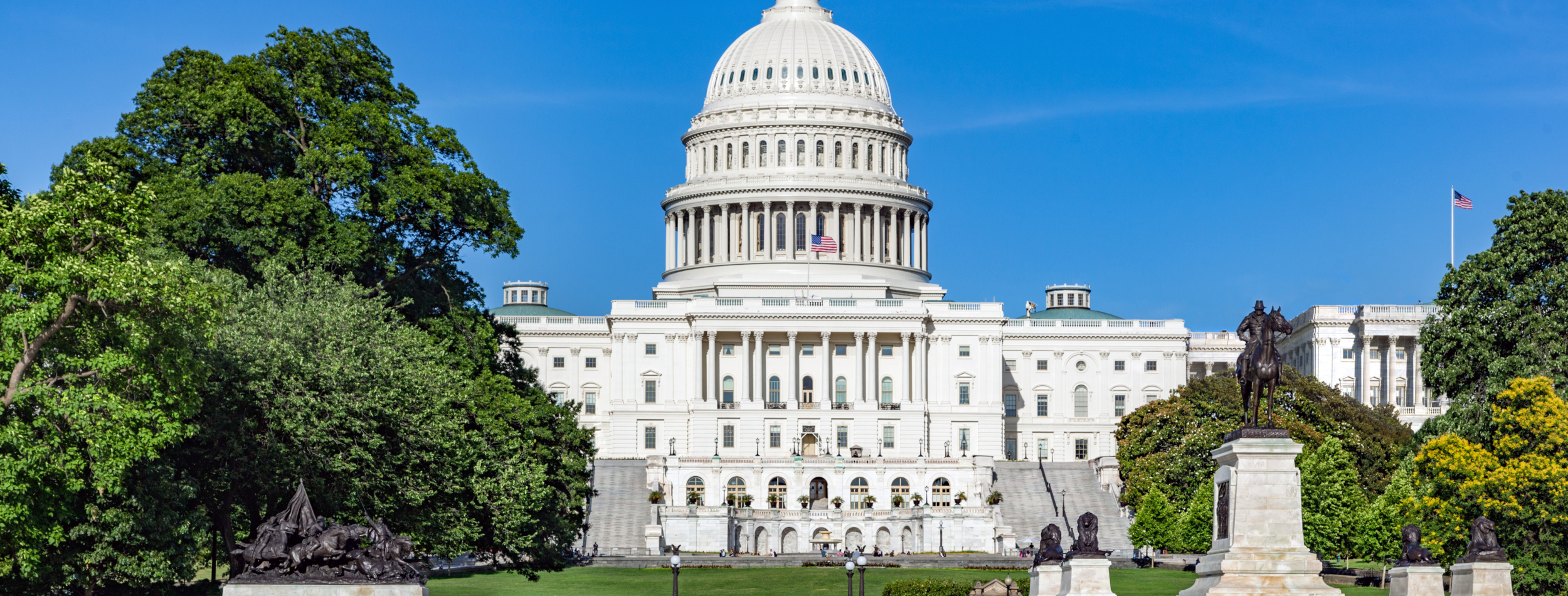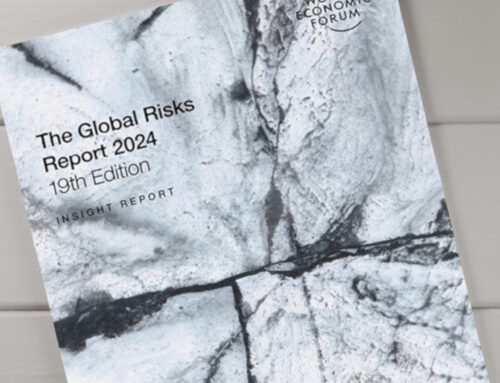

President Biden’s Address to Joint Session of Congress
Share this
President Biden gave his first address to a joint session of Congress on Wednesday night, just shy of his 100th day in office. It was a unique and historic occasion for a variety of reasons. For one, it was the first time that two women sat behind the President as House Speaker Nancy Pelosi and Vice President Kamala Harris presided. Additionally, the setting was marked by protocols related to the pandemic. Where normally roughly 1,600 people would attend such an event, only about 200 invited members of Congress were in attendance to allow for spaced-out seating.
Early in his speech, President Biden set the theme declaring “America is on the move again.” Earnest in tone, he spoke about the recovery from the pandemic and repeatedly stated it is “within our power” to accomplish his policy aims. He took credit for speeding the COVID-19 vaccination process with more than 220 million doses delivered. He also touted many provisions of the American Rescue Plan, the $1.9 trillion COVID response package enacted in March.
Prospectively, he spent the bulk of his time advocating for his twin infrastructure proposals. The earlier- released American Jobs Plan is focused primarily on the administration’s physical infrastructure priorities. He spoke for the first time in detail about the American Families Plan, which many have characterized as more geared toward human infrastructure. He highlighted four main areas of the plan. It would guarantee an additional four years of public education, two years for pre-kindergarten and two years of community college. The plan would also provide programs for childcare and for paid employment leave. He also proposed extending the enhancements to the child tax credit enacted temporarily through the American Rescue Plan.
President Biden ran through a litany of other issues exhorting Congressional action. He highlighted the administration’s climate policy and the virtual global summit he recently hosted. He toured through a number of countries highlighting foreign policy challenges and opportunities. In an attempted plea for bipartisanship, he discussed the issues of gun control, immigration and voting rights. Notably, he called for action on police reform by the end of May to accomplish it within a year of the death of George Floyd.
Sen. Tim Scott (R-S.C.) delivered the Republican party’s response to the President’s speech. He spoke about his troubled upbringing and rising to become the first African-American U.S. senator from South Carolina as evidence of opportunity in the United States. He criticized the President as offering divisive policy proposals rather than a bipartisan agenda. In contrast, he touted that under Republican control last year, five bipartisan COVID response packages were enacted. On infrastructure, he contended that less than 6% of the President’s proposal is to be spent on roads and bridges. He commented on his own efforts to pursue police reform last year that were blocked in the Senate, and he shared about his lived experience in terms of issues of race in this country.
Typically for an address like this the First Lady would host guests in the First Lady’s box of the House gallery. The President would intersperse stories about these individuals to accentuate the point of the policies being articulated. There was no such gathering this time given the attendance constraints, but First Lady Jill Biden did host a virtual gathering. The invited featured guests had backgrounds or stories to highlight the administration’s policies on immigration, social infrastructure, guns, LGBTQ rights and access to broadband.
For Zurich and our customers, there are a great many implications from the President’s address. For example, the proposed scope of the combined infrastructure packages could total roughly $4 trillion. That could produce a good deal of business in our construction insurance and surety bond units. The dramatic level of investment in electric vehicles and the infrastructure to support them could mean new ways of doing business for our auto dealer customers and service contracts business. The President also referred to Switzerland as a tax haven, so from a tax policy perspective Zurich faces some headwinds in the administration’s approach.
It is not likely that any of these efforts changed many minds, but each offered clear contrasts for the direction of policymaking. If the President’s ambitious agenda is to be enacted, it will require artful execution through the historically narrow Democratic majorities in Congress.
By David Mork
Assistant Vice President of Federal Affairs

President Biden’s Address to Joint Session of Congress
Share this
President Biden gave his first address to a joint session of Congress on Wednesday night, just shy of his 100th day in office. It was a unique and historic occasion for a variety of reasons. For one, it was the first time that two women sat behind the President as House Speaker Nancy Pelosi and Vice President Kamala Harris presided. Additionally, the setting was marked by protocols related to the pandemic. Where normally roughly 1,600 people would attend such an event, only about 200 invited members of Congress were in attendance to allow for spaced-out seating.
Early in his speech, President Biden set the theme declaring “America is on the move again.” Earnest in tone, he spoke about the recovery from the pandemic and repeatedly stated it is “within our power” to accomplish his policy aims. He took credit for speeding the COVID-19 vaccination process with more than 220 million doses delivered. He also touted many provisions of the American Rescue Plan, the $1.9 trillion COVID response package enacted in March.
Prospectively, he spent the bulk of his time advocating for his twin infrastructure proposals. The earlier- released American Jobs Plan is focused primarily on the administration’s physical infrastructure priorities. He spoke for the first time in detail about the American Families Plan, which many have characterized as more geared toward human infrastructure. He highlighted four main areas of the plan. It would guarantee an additional four years of public education, two years for pre-kindergarten and two years of community college. The plan would also provide programs for childcare and for paid employment leave. He also proposed extending the enhancements to the child tax credit enacted temporarily through the American Rescue Plan.
President Biden ran through a litany of other issues exhorting Congressional action. He highlighted the administration’s climate policy and the virtual global summit he recently hosted. He toured through a number of countries highlighting foreign policy challenges and opportunities. In an attempted plea for bipartisanship, he discussed the issues of gun control, immigration and voting rights. Notably, he called for action on police reform by the end of May to accomplish it within a year of the death of George Floyd.
Sen. Tim Scott (R-S.C.) delivered the Republican party’s response to the President’s speech. He spoke about his troubled upbringing and rising to become the first African-American U.S. senator from South Carolina as evidence of opportunity in the United States. He criticized the President as offering divisive policy proposals rather than a bipartisan agenda. In contrast, he touted that under Republican control last year, five bipartisan COVID response packages were enacted. On infrastructure, he contended that less than 6% of the President’s proposal is to be spent on roads and bridges. He commented on his own efforts to pursue police reform last year that were blocked in the Senate, and he shared about his lived experience in terms of issues of race in this country.
Typically for an address like this the First Lady would host guests in the First Lady’s box of the House gallery. The President would intersperse stories about these individuals to accentuate the point of the policies being articulated. There was no such gathering this time given the attendance constraints, but First Lady Jill Biden did host a virtual gathering. The invited featured guests had backgrounds or stories to highlight the administration’s policies on immigration, social infrastructure, guns, LGBTQ rights and access to broadband.
For Zurich and our customers, there are a great many implications from the President’s address. For example, the proposed scope of the combined infrastructure packages could total roughly $4 trillion. That could produce a good deal of business in our construction insurance and surety bond units. The dramatic level of investment in electric vehicles and the infrastructure to support them could mean new ways of doing business for our auto dealer customers and service contracts business. The President also referred to Switzerland as a tax haven, so from a tax policy perspective Zurich faces some headwinds in the administration’s approach.
It is not likely that any of these efforts changed many minds, but each offered clear contrasts for the direction of policymaking. If the President’s ambitious agenda is to be enacted, it will require artful execution through the historically narrow Democratic majorities in Congress.
By David Mork
Assistant Vice President of Federal Affairs




